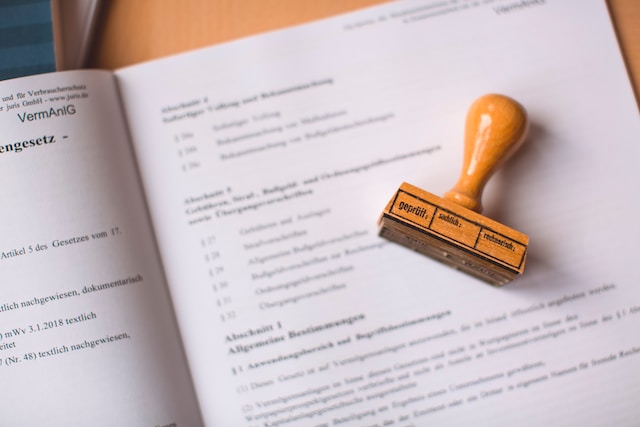A Beginner’s Guide to Traveling to Europe For First Time

Traveling to Europe for first time is an entrancing and energizing experience full of scenic locations, ancient history, and varied cultures.
From the famous monuments of Paris to the picturesque canals of Venice, from the stately fortresses of Scotland to the shining beaches of Greece, Europe brings together an attractive combination of traditional attractions and modern marvels.
Brace yourself as you prepare to explore this continent steeped in centuries of artistry, writing, and advancement; immerse yourself in a vivid array of visual splendors, profound sounds, and exquisite flavors that will remain with you forever.
Let the journey start as you uncover the mysteries of Europe–a place where aspirations turn into cherished memories and lifelong interests are born.
Importance of traveling and experiencing new cultures
Visiting new places and learning about different cultures is one of the best parts of travel. It can be a great way to learn about history and gain a greater understanding of the world we live in. Traveling and taking in other cultures provide a lot of advantages, including:
1. Gain a better understanding of the world: Traveling can help you understand different cultures and how people live around the world. It can also give you a greater appreciation for your own culture and way of life.
2. Broadening your horizons: Seeing new places and meeting new people can help you expand your horizons and see things from a different perspective. You might even discover that you have more traits with folks from different cultures than you previously believed.
3. Learn new skills: Traveling can be a great opportunity to learn new skills, such as learning how to navigate in a foreign city or trying out new cuisine.

4. Unwind and relax: Taking some time to yourself to explore a new place can be very relaxing and rejuvenating. It can also be a great way to bond with friends or family members if you travel together.
5. Get out of your comfort zone: Stepping outside of your comfort zone is always a good idea, and traveling to new places is the perfect way to do it. You may find that you enjoy doing things that you never thought you would, like hiking or visiting museums.
Let me first respond to some of the most often-asked questions by first-time travelers before I begin with some advice for those making their first trip to Europe. I can assure you that the majority of your inquiries will be answered.
What do I need to know when traveling to Europe for the first time?
If you’re planning a trip to Europe for the first time, there are a few things you should know before you go. Here are a few tips and tricks for first-time travelers to Europe:
1. Know your visa requirements: Depending on your nationality, you may need to obtain a visa before traveling to Europe. Make sure to research the visa requirements for your specific country before booking any travel plans.
2. Choose the right type of accommodation: There are many different types of accommodation available in Europe, from hostels and hotels to apartments and villas. Choose the option that best suits your needs and budget.

3. Pack appropriately: Depending on the time of year you’re traveling, make sure to pack appropriate clothing for the temperature and weather conditions. Also, don’t forget to pack any essential medications or toiletries.
4. Learn some key phrases in the local language: Knowing a few key phrases in the local language can go a long way when traveling in Europe. Even if you don’t speak the language fluently, being able to communicate basic phrases will help immensely.
5. Familiarize yourself with public transportation: In many European cities, public transportation is the best way to get around. Before your trip, familiarize yourself with the different options available and how to purchase tickets or passes.
What is the best country to visit for the first time in Europe?
There is no easy answer to this question as there are so many amazing countries to visit in Europe!
However, some factors to consider include what type of trip you are looking for and what your interests are.
For instance, if you want to experience a bustling city with plenty of cultural sights and activities, then Paris or Rome might be a good choice. Or, if you prefer a more relaxed vacation by the beach, then Greece or Spain could be perfect.
The best country to visit for the first time in Europe really depends on your individual preferences!
Is it difficult to travel to Europe?
No, traveling in Europe is not difficult. In fact, it can be quite easy and enjoyable if you know what to expect and are prepared for the occasional challenges that may arise. Here are some tips and tricks for first-time travelers to Europe:
Before you go, take some time to learn about the countries you’ll be visiting. This will help you understand the culture and customs better so that you can avoid any potential misunderstandings.

Unless you’re planning on doing a lot of shopping, there’s no need to pack heavily. European cities are generally easy to get around by foot or public transportation, so you won’t need a lot of extra gear.
Plans change, and that’s especially true when traveling. Don’t stress too much if things don’t go exactly according to plan – just go with the flow and enjoy the ride.
Even if you don’t speak the local language fluently, chances are you’ll still be able to communicate with people using a combination of English, hand gestures, and smiles.
Have fun! Traveling is an adventure, so embrace it and enjoy every moment!
What is the most popular way to travel in Europe?
There are a variety of ways to travel around Europe, and the most popular way will likely depend on your budget, travel style, and preferences. If you’re looking for the most popular way to travel in Europe, here are a few options to consider:
– Train: Taking the train is a great way to see multiple European countries in one trip. It’s also relatively affordable and can be very comfortable if you choose first or business class.

– Bus: Traveling by bus is another option that is often more affordable than taking the train. It’s not as fast as the train, but it can be a great way to see different parts of Europe.
– Plane: Flying is generally the fastest way to travel between countries in Europe. It’s also usually the most expensive option, though there are sometimes deals to be found on airfare.
How should I prepare for a trip to Europe?
If you’re planning a trip to Europe, there are a few things you should keep in mind to make the most of your experience. Here are a few tips and tricks for first-time travelers:
Book your flights and accommodation in advance: Once you know where you’re going, it’s time to start booking your travel arrangements. It’s generally cheaper to book flights and accommodation well in advance, so try to do this as early as possible.
Get travel insurance: This is an important step that many people overlook, but it’s crucial in case something goes wrong while you’re abroad. Make sure to get comprehensive travel insurance that covers medical expenses, lost luggage, and more.
How early should I plan a trip to Europe?
Assuming you would like tips for first-time travelers to Europe, the best answer to your question is as soon as possible.
It may seem like a daunting task to plan a trip to a continent you’ve never been to before, but with a little bit of research and help from travel professionals, you can make your trip-planning process much smoother.
Here are a few things to keep in mind when planning your trip:
-Start by researching popular destinations and creating a list of must-see places. This will help you get an idea of where you want to go and what kind of itinerary would work best for you.
-Once you have an idea of your destination(s), start looking into flight prices and accommodation options. It’s usually best to book flights and accommodation well in advance in order to get the best deals.
-If you’re unsure about what kinds of activities or attractions will be available at your chosen destination(s), consult with a travel agent or professional who can offer advice based on your interests.
By following these tips, you can begin planning your dream trip to Europe without feeling overwhelmed.
Remember to take your time, do your research, and consult with experts when needed – this way, you can ensure that everything is taken care of well in advance and that you have a fantastic experience while exploring all that Europe has to offer.
Is it cheaper to fly or train in Europe?
There are a few things to consider when deciding whether to fly or take the train in Europe. Price is usually the biggest factor, but there are other things to keep in mind as well.
The cost of flying really depends on where you’re going and when. Tickets tend to be cheaper if you book in advance, but this isn’t always the case. It’s also worth considering budget airlines, which can be much cheaper than traditional carriers.

When it comes to taking the train, prices vary depending on the country and train operator. Generally speaking, high-speed trains are more expensive than slower ones.
The time it takes to travel is another important consideration. Flying is almost always faster than taking the train, but that doesn’t mean it’s always the best option.
If you’re going to a major city, chances are there will be good train connections. And if you have some time to spare, traveling by train can be a more scenic and pleasant experience than flying.
So, what’s the bottom line? The answer is: it depends. Consider your destination, timing, budget, and preferences to decide whether flying or taking the train makes the most sense for your trip.
What is the cheapest time to go to Europe?
The cheapest time to go to Europe is usually during the shoulder season, which is the period between the high season and the low season. The shoulder season typically falls between April and June, and between September and October.
During these months, you’ll find that airfare and hotel prices are lower than they are during the high season. You’ll also find that there are fewer crowds, so you’ll be able to enjoy your trip without having to fight for space at attractions.
Do I need a visa for Europe?
There are a few different ways to answer this question, as the visa requirements for Europe vary depending on your citizenship and the country (or countries) you plan on visiting.
Generally speaking, citizens of the European Union (EU), Iceland, Liechtenstein, Norway, and Switzerland do not need a visa to enter another Schengen Area country for tourist or business purposes.
Additionally, there are a number of other countries whose citizens are visa-exempt for travel to the Schengen Area. These include Australia, Canada, Japan, New Zealand, and the United States.
However, even if you are visa-exempt, you will still need to have a valid passport and/or other travel documents when entering Europe.
If you do need a visa to travel to Europe, it is recommended that you apply for one well in advance of your trip, as processing times can vary significantly.
What documents do I need to travel to Europe?
When traveling to Europe, you will need a few documents in order to enter the country. These documents include a passport, a visa (if required), and proof of insurance.
Your passport must be valid for at least six months after your planned return date, and it should have at least two blank pages for stamps.
If you plan on traveling to multiple countries within Europe, make sure to check if any of them require a visa for entry.

Schengen countries do not require a visa for stays up to 90 days, so if your trip is shorter than that, you likely won’t need a visa. However, if you are planning on staying longer or intend to visit multiple Schengen countries, then you will need to apply for a Schengen Visa.
All travelers to Europe must have some form of medical insurance. This can either be through your home country’s healthcare system (if applicable), or through a private travel insurance policy.
Your insurance must cover emergency medical expenses as well as repatriation in case of death or illness. Make sure to keep your insurance information handy when traveling, as you may be asked to present it upon arrival in Europe.
What Schengen visa means?
When most people think of Europe, they think of the Schengen Area. The Schengen Area is a group of 26 European countries that have agreed to allow the free movement of their citizens between member states. In order to travel to the Schengen Area, you will need a Schengen visa.
A Schengen visa is a visa that allows you to travel to any member state of the Schengen Area for up to 90 days.
You can apply for a Schengen visa at the embassy or consulate of any member state. Once you have been issued a Schengen visa, you can travel freely within the Schengen Area.
There are several types of Schengen visas, depending on your purpose of travel. If you are traveling for tourism or business, you will need a tourist or business visa.
If you are traveling for medical reasons, you will need a medical visa. And if you are traveling to study or work, you will need a student or work visa.
Schengen visas are usually valid for multiple entries, meaning you can enter and exit the Schengen Area multiple times within the validity period of your visa.
However, there are also single-entry and double-entry visas available. Single-entry visas allow you to enter the Schengen Area only once, while double-entry visas allow you to enter twice.
If you want to stay in the Schengen Area for longer than 90 days
What is the cheapest destination in Europe?
There’s no one-size-fits-all answer to this question, as the cheapest destination in Europe depends on a variety of factors, including your travel dates, accommodation preferences, and planned activities. However, there are a few general tips that can help you save money on your trip to Europe:
• Look for budget airlines: Don’t assume that all European flights are expensive. There are a number of budget airlines that offer affordable flights to major cities across the continent. Do some research and see if you can find a good deal on airfare.
• Consider camping or hostels: If you’re willing to forgo some of the comforts of home, camping or staying in a hostel can be a great way to save money on accommodation.
• Avoid peak travel times: If possible, try to avoid traveling during peak season (usually June-August). Not only will prices be higher during this time, but attractions will be more crowded. Instead, consider visiting Europe in the shoulder season (April-May or September-October), when prices are lower and there’s less of a tourist rush.
Excitement and anticipation of traveling to Europe for the first time
The thought of exploring Europe for the first time can be both exhilarating and daunting. There’s so much to see and do, and it can be difficult to know where to start. But with a little planning and research, you can ensure that your trip is everything you’ve dreamed of.

To help you get started, we’ve put together a list of tips and tricks for first-time travelers to Europe. From finding the best flights to packing your bags, we’ve got you covered. So what are you waiting for? Start planning your dream trip today!
Unique attractions and experiences in each destination
One of the great things about Europe is that there is so much to see and do in each destination. Whether you’re interested in history, art, or food, or just want to experience something new, there’s sure to be something for you.
Here are a few unique attractions and experiences in each destination:
Paris: Take a leisurely stroll down the Champs-Elysées, window shop at high-end stores, or people watch at a café. Climb to the top of the Eiffel Tower for breathtaking views of the city. Or visit one of Paris’ many museums like the Louvre or Musée d’Orsay.
Rome: Toss a coin into the Trevi Fountain, explore the ruins of the Roman Forum and Colosseum, or take a Vatican City tour. For something different, try your hand at making pizzas at a cooking class or take a Segway tour through ancient Rome.
London: See Big Ben and Westminster Abbey, ride an iconic red double-decker bus, or take in views of the city from atop the London Eye Ferris wheel. Visit Buckingham Palace to see the changing of the guard ceremony or get tickets to a West End theater show. There’s also plenty of green space to relax in with Hyde Park and St James’s Park being two of the most popular spots.
Weather-appropriate clothing and footwear
As someone who has never traveled to Europe before, it is important to pack weather-appropriate clothing and footwear. Depending on the time of year you visit, the average temperatures can range from 45-75 degrees Fahrenheit.
Even if you’re visiting during the warmer months, be sure to pack a light jacket or sweater for cooler evenings.
And don’t forget comfortable walking shoes! No matter what time of year you visit, you’ll likely do a lot of walking, so make sure your footwear is up to the task.
Adapters and converters for electrical devices
There are a few things to keep in mind when packing electrical devices for a trip to Europe. First, the voltage in Europe is higher than in the United States, so adapters and converters will be necessary for any devices that are not dual voltage.
Second, the plugs in Europe have two round prongs, so adapters will be needed for devices with three prongs. Many hotels do not have outlets in the bathrooms, so it is important to pack a portable charger or power strip.
Adapters and converters are readily available at most travel stores or online. Be sure to pack enough for all of your devices, as well as any extras you may need in case of lost or broken adapters.
It is also a good idea to keep all of your electronic items in one place, such as a carry-on bag, to make it easy to find everything when you need it.
Travel documents and copies of important information
Before you travel to Europe, be sure to have your travel documents in order. This includes your passport, visa (if required), and any other important documents such as your driver’s license or health insurance card.
You should also make copies of all of your important documents, including your passport and visa, and keep them in a safe place in case you lose the originals while you’re abroad.
Outdoor activities and natural wonders
There are so many outdoor activities and natural wonders to see in Europe that it can be hard to know where to start. But don’t worry, we’ve got you covered with our beginner’s guide to the best outdoor activities and natural wonders in Europe.

Whether you’re looking for a breathtaking view, an adrenaline-pumping adventure, or a relaxing day in nature, there’s something for everyone on this list. So get ready to explore some of the most beautiful places on earth!
1. The Ring of Kerry, Ireland
The Ring of Kerry is one of the most popular tourist destinations in Ireland for good reason. This scenic route takes you through some of the most stunning scenery in the country, including the Emerald Isle’s world-famous coastline.
2. The Cinque Terre, Italy
The Cinque Terre is a must-see for any traveler visiting Italy. This gorgeous stretch of coastline is home to five picturesque villages, each with its own unique charm. You can hike or take a train between the villages and stop to enjoy the views along the way.
3. The Matterhorn, Switzerland
The Matterhorn is one of the most iconic mountains in Europe and a true natural wonder. If you’re feeling adventurous, you can even attempt to climb it! Even if you don’t make it to the summit, just being in the presence of this majestic peak is an incredible experience.
Balancing structured plans with free time for exploration
When traveling to Europe for the first time, it’s important to strike a balance between structured plans and free time for exploration.
With so much to see and do, it can be tempting to try and pack everything into your trip. But this can often lead to burnout and frustration.
A better approach is to mix up your itinerary with some planned activities and some downtime. This will give you the chance to experience all that Europe has to offer without feeling overwhelmed.
Some things to keep in mind when planning your trip:
–Allow yourself plenty of time: Rushing around from place to place is not only exhausting, but it also means you’ll miss out on the little details that make travel so special.
–Choose your destinations carefully: Trying to see too many cities in a short amount of time is a recipe for disaster. Instead, focus on a few key places that interest you the most.
–Don’t overschedule yourself: It’s important to have some flex time in your itinerary so you can spontaneously explore or take advantage of unique opportunities that arise while you’re on vacation.
By following these tips, you’ll be sure to have a trip that’s both enjoyable and memorable.
Conclusion
The next time you think about planning a trip to Europe, consider some of the tips and tricks mentioned here.
Take into account your budget, plan out the details of your itinerary so that you make the most of your visit, and get ready for an unforgettable journey! With just a bit of extra effort and preparation on your part, you can be sure to have a great trip full of amazing experiences. Bon voyage!
Before you set off, it is always wise to acquire a European Health Insurance Card (EHIC) as this provides access to free or discounted medical care in European countries.
Additionally, if you plan on using public transportation such as trains during your stay, make sure to check the train schedules before leaving home.





